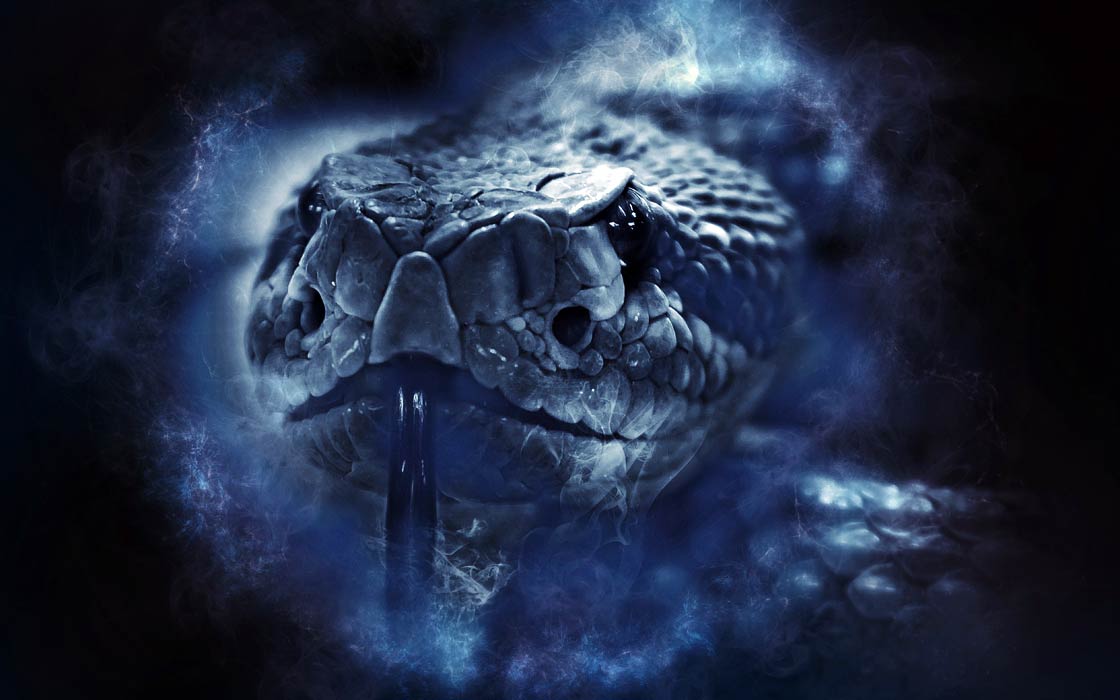Rattlesnakes (pit vipers) – terrifying snakes
Rattlesnakes – fearsome snakes
Rattlesnakes are among the most feared snakes in the world. South American rattlesnake (Crotalus durissus terrificus) has the strongest venom. About 75% of people bitten by this snake die if they are not given the serum immediately. Rattlesnakes are usually considered aggressive and violent animals, but are actually shy and timid.
Classification
- Kingdom: Animalia
- Phylum: Chordata
- Class: Reptilia
- Order: Squamata
- Suborder: Serpentes
- Family: Viperidae
- Subfamily: Crotalinae
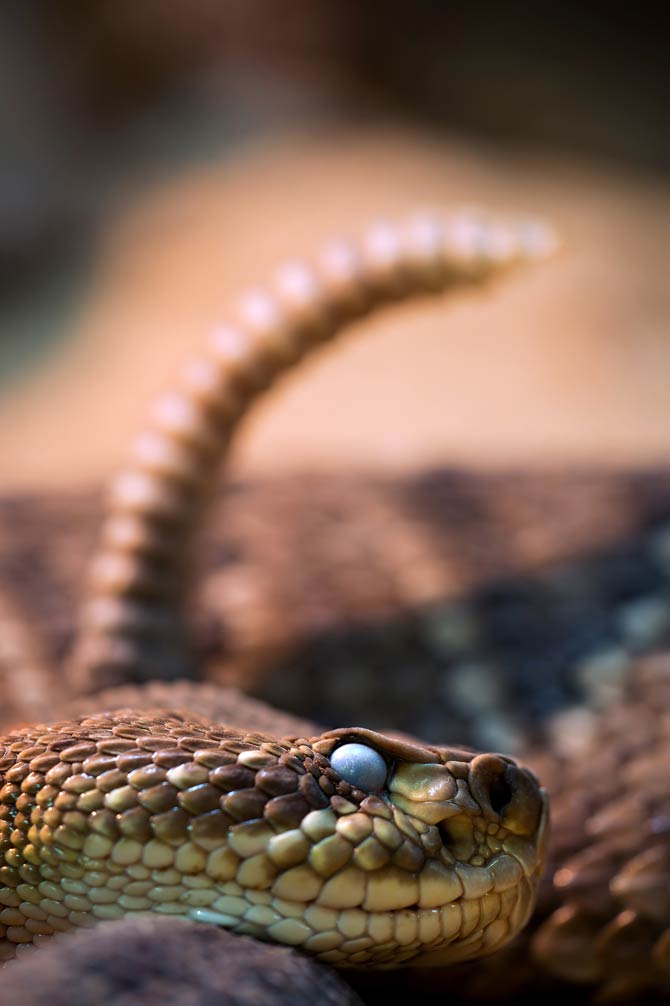
Species and distribution
There are 36 species and 70 subspecies of rattlesnakes in the world. The most famous are the eastern diamondback rattlesnake (Crotalus adamanteus) (the largest in North America – up to 240 cm (7.8 ft) in length), horned rattlesnake / sidewinder (Crotalus cerastes), pygmy rattlesnake (Sistrurus miliarius) and very poisonous South American rattlesnake (Crotalus durissus terrificus). All species have one thing in common – their venom is highly toxic. Rattlesnakes vary in size, the smallest species reaching 60 cm, the largest even 250 cm (8.25 ft) and weight of 15.4 kg (34 lb).
Most rattlesnakes inhabit the steppe and desert areas of Mexico and the southern part of the United States. Their diet consists mainly of mice, rats. They hunt frogs, lizards and small birds quite exceptionally.
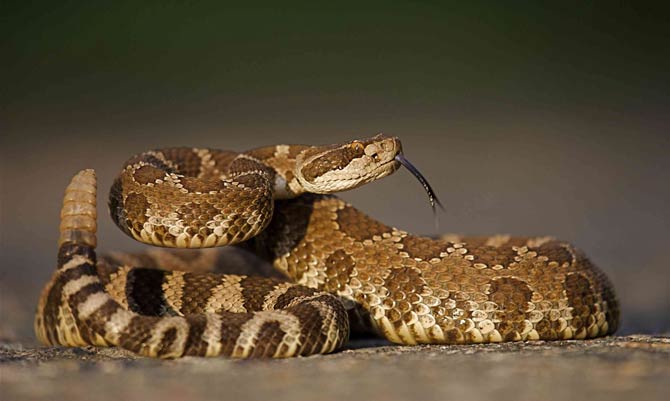
Characteristic
Desert rattlesnakes have developed an unusual way of moving through sand. Moving on the loose ground, the hose twists the body into side loops, thanks to which it sticks well to the sand. At the same time, characteristic “lines” are created. This way of moving allows the rattlesnake to make quick movements.
Rattlesnakes attack only when they feel a direct threat from humans. When the snake is disturbed, it coils the body into a spiral and rattles loudly to warn and scare away enemies. If that doesn’t help, he bows his head a little, waiting for an opportunity to attack the enemy.
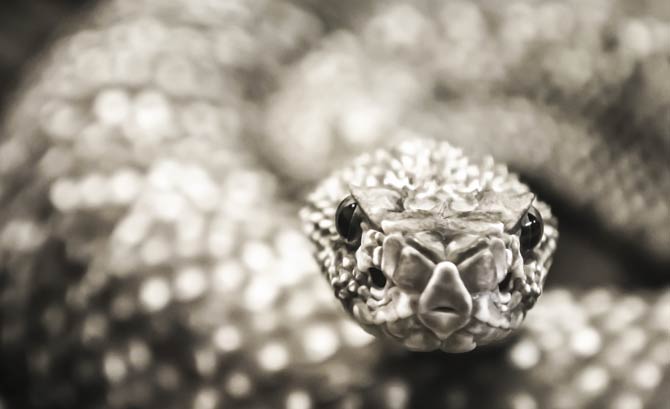
Activity
The activity of the rattlesnakes is, as with all vertebrates warm to the touch, very dependent on the temperatures. The activity times change accordingly, especially in areas with pronounced seasons. Species that live in these areas, especially the western rattlesnake , are therefore particularly active at night and at dusk during the warmest seasons. In autumn and spring, this activity shifts into the early morning or even into the daytime when the sun’s rays are needed for warming. On the other hand, during winter they keep hibernation and withdraw into a suitable hiding place.
Nutrition
Rattlesnakes mainly feed on small mammals such as various mice, prairie dogs, chipmunks or rats and rabbits. These animals are very well recognized with the heat-sensitive pit organs, due to their very warm body compared to the environment. Mammals make up about 85 percent of the food in rattlesnakes. It was found that the mortality of these preys from rattlesnakes is very high.
Rattle
The rattle, which is located at the end of the tail, consists of a series of dry scales adjacent but not attached to each other. Each time the rattlesnake sheds its skin, a new ring of scales appears at the tip of its tail.
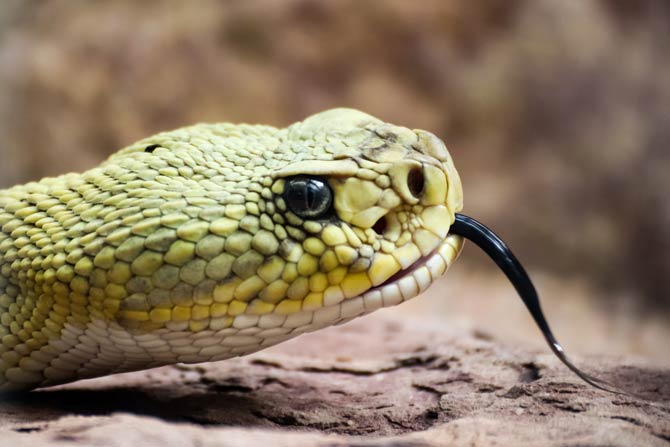
The largest rattlesnake
Eastern diamondback rattlesnake (Crotalus adamanteus)
- Length: up to 2.5 m (8.25 ft)
- Weight: up to 15.4 kg (34 lb)
The smallest rattlesnake
Pygmy rattlesnake (Sistrurus miliarius)
- Length: 40–60 cm (16–24 in) / max 80.3 cm (31.6 in)
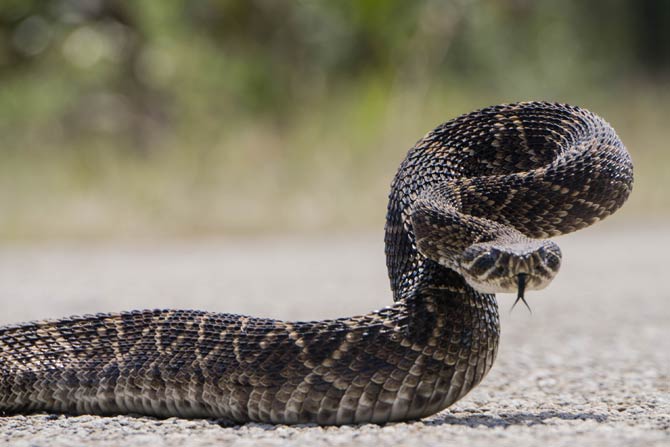
Rattlesnakes – interesting facts
- The South American rattlesnake (Crotalus durissus terrificus) has the most severe venom of any rattlesnake. About 75% of people he bites die if they are not given the serum immediately.
- When a rattlesnake feels threatened or disturbed, it shakes the rattle 40-60 times per second.
- The scales in the rattle are made of keratin – the same substance our nails are made of.
- Many rattlesnakes often share the same lair with other snakes.
- Rattlesnakes are immune to their own venom.
- There is a species of rattlesnake (Santa Catalina Rattlesnake) that does not have… a rattle.
- In the wild, a snake’s rattle usually consists of 14 scales rings, and zoo snakes have rattles of up to 29 parts.
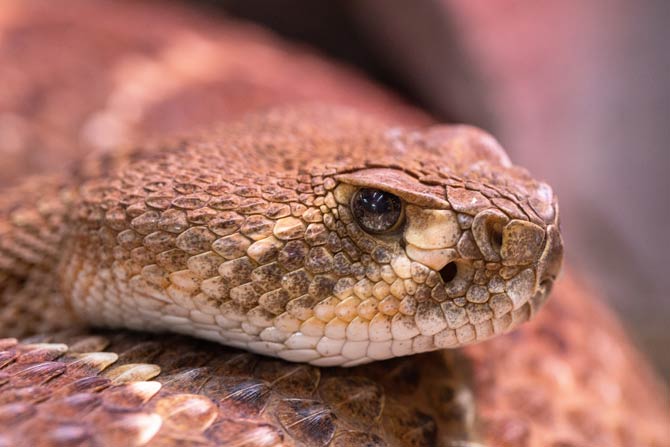
Recommended
- Most venomous snakes – Top 100
- Snakes
- Cobras – fearsome snakes
- Black mamba
- Inland taipan
- Anaconda
- Titanoboa
- Longest snakes
- Fastest animals
- Fastest birds
- Largest eagles

